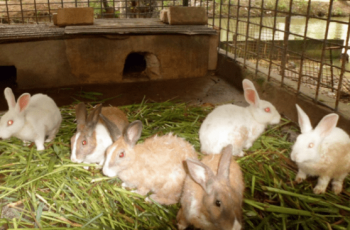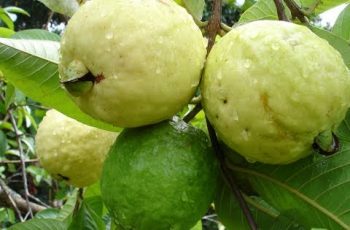How To Start Yam Farming In Nigeria: Modern Guidelines For Beginners

Yam farming business in Nigeria is a golden opportunity for any farmer or agribusiness investor. It will interest you to know that about 70% of the total yam production in the world today comes from West Africa. Commercial yam farming is currently a booming business in Nigeria. Aside from supplying the growing Nigerian population, you can also export yam to countries like the USA, Japan, Germany, France, United Kingdom, Canada, etc.
Read: How to start watermelon farming business in Nigeria
Commercial yam production in Nigeria is currently making many Nigerian farmers millionaires. At the moment, Nigeria is the world largest producer of yam. Even with this huge opportunity in yam farming business in Nigeria, very few people are really venturing into commercial yam production in Nigeria.
With this yam farming business, you are certain to double your investment just within a single year. The objective of this article is to help you with the step-by-step guide on how to start yam farming business venture in Nigeria. The focus of this article is specifically on white yam called Dioscorea rotundata which is the species that is mainly cultivated in Africa.
You will agree with me that yam farming is a very profitable business that guarantees huge returns on investment once you do it right. This article will help you with all that you need to know about yam production in Nigeria.
Why Yam Farming Business?
You may be asking the question; why should you invest your money in yam farming business in Nigeria? Well, the answer is not farfetched. Some of the reason why you should invest in yam production in Nigeria includes:
Also Read: How to start orange plantation business in Nigeria
-
Yam farming business is highly profitable
Yam farming business in Nigeria is a huge opportunity for you to make money as a farmer. It will interest you to know that about 50,000 tubers of yam can be harvested from the farmland of 500m by 500m in size. With the current high cost of food items in Nigeria, you can now imagine how much you can make from just selling 50, 000 tubers of yam in the Nigerian market.
When you now get involved in the exportation of yam to Europe and America, you will be counting in hundreds of millions of Naira as profit.
-
Large market to sell your yam produce
It will interest you to know that there is always a market waiting for you to bring your yam produce for sale. The population of Nigeria is growing exponentially, and the need for food is constant. Aside from just eating the yam, it can also be used to produce yam flour. Therefore, yam farming business does not necessarily need you to search for a market for your products.
-
Relatively cheap to start
Just like every other business, it is recommended that you start on a small scale and then graduate to commercial yam production in Nigeria. You can start your yam farming business on a plot of land and then grow the business from there. Don’t wait until you have the money to buy tens or hundreds of acres of land before you can start your yam farming business in Nigeria.
Guidelines To Starting Your Yam Farming Business In Nigeria
-
Have a very good business plan
This is your number one task before starting your yam farming business. Having a yam farming business plan will assist you in knowing how to run your yam farming business. What the compass is to a sailor is what the business plan is to a businessman. With your yam farming business plan, you already foresee how your business will look like in the future. This is because you already planned and had projections for the future.
See: How to write a business plan template for oil palm plantation in Nigeria
-
The cost of yam farming business in Nigeria
After you must have drafted your yam farming business plan, the next step is to source for the capital to start your yam farming business in Nigeria. Before sourcing for your startup capital, you must have determined the cost of starting yam farming in Nigeria. What is the cost of yam seedlings, land, fertilizer, pesticides, etc?
When sourcing for capital, you can meet friends and family for help. Aside from family and friends, you can also seek a loan from financial institutions like the commercial banks. For a beginner in yam farming business in Nigeria, seeking loan should be your last option when it comes to sourcing for funds. You have to make sure that all other avenues to raise capital has been exhausted before you approach the banks.
-
Get suitable farmland for your yam farming business
Well-drained farmlands are best suited for yam production in Nigeria. The best yam yields are from sandy and silt loam soil. Clay loam soil is also good for yam farming. When it comes to soil quality and weather conditions, forest farmlands in tropical regions are the best environment for yam farming business.
-
Farmland preparation for yam farming
After you have selected the farmland to be used for your yam farming business in Nigeria, the next task is to prepare the land. The farmland preparation involves cutting and clearing of bushes in the farmland. Yam is best planted between the months of February and April. That’s the beginning of the rainy season.
Once you have finished with the clearing of the farmland, the next point of call is the making of molds or ridges for planting your yam seedlings. The molds should be about 1m in height and also 1m apart. The ridges also should be 1m apart as well. When using ridges, it should be constructed in such a way that it is at right-angle with the direction of flow of water on the farmland.
This is done to minimize soil erosion which is very catastrophic to yam farming.
-
Buying and preparation of setts
Setts are the tubers of yam that are meant for planting. First, you need to make sure you bought the best variety of white yam (Dioscorea rotundata) for you to get the maximum yield. After you have purchased your setts, you will have to cut them into two from the head to tail. Each half is planted on the opposite side of the molds.
It is recommended that you plant a maximum of two setts on a single mold for optimal yield. Some people prefer pre-sprouting the yam setts before planting them in the farmland. The direct planting gives the yam setts ample time to adapt to the farm environment.
-
Yam planting procedures

There are specific guidelines for planting your yams in the field. You don’t just dig the ground and throw them there. In yam farming, when planting the yams, the distance between one planted yam sett and another should be 1m while the sett is planted at a depth of 0.1m. a hectare of land will contain between 20,000-27, 000 setts.
-
Ridge mulching
You should mulch the farmland that you planted your yam setts. The mulching will help reduce soil temperature, hinder the growth of weeds, and conserve soil water. Materials like rice straw, palm fronds, corn stalks can be used to mulch the soil. Aside from the aforementioned benefits of mulching to yam farming, it also adds nutrients to the soil when the mulching materials have decomposed.
-
Fertilizer application
You don’t just buy any fertilizer simply because it’s called fertilizer. There is the best fertilizer for yam farming in Nigeria. The NPK fertilizer is readily used in yam farming. The amount of fertilizer to be used on the soil is dependent on soil fertility. In order to determine the soil fertility, you can submit soil samples to agricultural institutes in your locality or the IITA for concise analysis.
The application of the recommended amount of fertilizer is done in two folds. The first is applied a month after the sprouting of your yam setts in the farm while the second is applied about two months after the first application. When applying the fertilizer, you should make sure it is applied at least 10cm away from the growing yam setts.
-
Staking your yam vines
Before the yam vines start crawling on the ground, you should stake plants for them. The bamboo is the most desirable for this staking exercise but other plants that can support the yam vines for at least seven months can also be used. The white yam twines to the left, unlike the cocoyam that twines to the right.
Once the vines start crawling on the ground, you then train them to climb the stakes by wrapping them around the stake plant in the anticlockwise direction. There is no doubt that yam farming business in Nigeria involves a lot of work, especially if you don’t have the money to hire laborers. The profits cover for this stress no doubt.
-
Method of harvesting yams
You know that your yam is ready for harvest when the leaves start turning yellow in color or drying up. It always starts late November till February the following year. The yam tubers that you intend to use as setts during the next planting season are harvested later. Yam tubers for consumption and sells are harvested earlier.
The use of hoe or any other farm tool can be used to harvest your yam tuber. Once you are done with the harvesting exercise, you then market your yam tubers and make your money.
ATTENTION…
At Entrepreneur Nigeria, we provide business plan writing services on any business niche. You can contact us on +2347037281050 and your business plan will be ready just within 2 weeks of your order.
That will all for now. You can always share your opinion and yam farming experiences in the comment box provided below. Your question on yam farming is also highly welcome.

